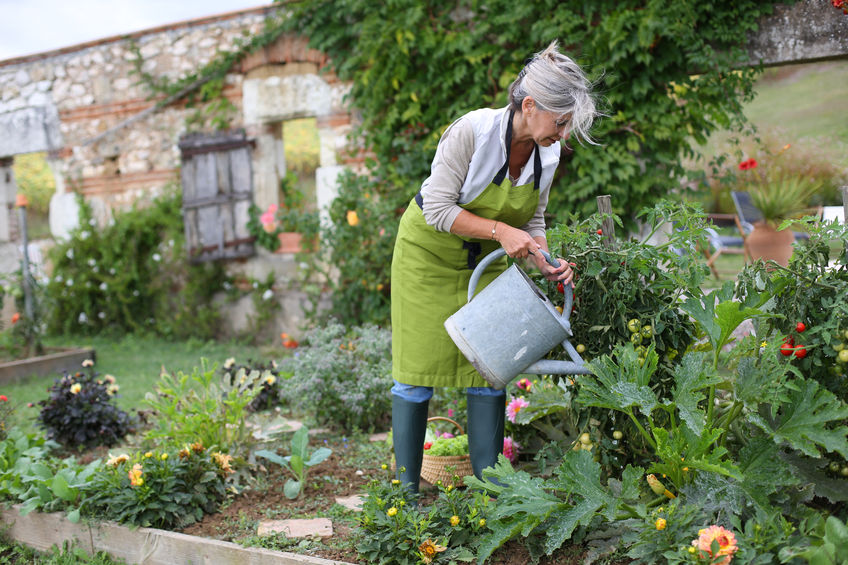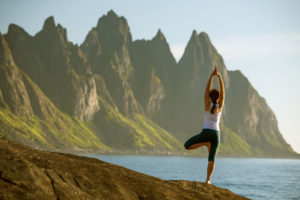
For most people, summer means picnics on the beach, pool parties, and days spent enjoying the great outdoors. For those suffering from arthritis, summer can mean increased symptoms and the need for a higher level of vigilance and protection. New Jersey pain management specialists offer up a few simple tips for managing your arthritis during the summer months. These include tips for staying pain-free, as well as suggestions for protecting yourself from increased risks of sun damage.
Tips For Managing Your Arthritis During the Summer Months:
- Ramp Up Your Sun Protection: One of the lesser known side effects of some medications used to treat arthritis is an increased sensitivity to light. Most commonly seen with NSAIDs, this increased sensitivity means you are more prone to sunburn and sun poisoning than most. Therefore, keeping your skin protected with regular and thorough applications of sunscreen and UVA and UVB ray protection clothing is a must!
- Choose the Right Footwear: While not what would immediately jump to mind when considering arthritis management, comfortable attire can have a direct impact on arthritis symptoms and pain levels. This is especially true for footwear. Choose shoes that offer a wealth of support while being lightweight enough so as to not place additional pressure and stress on the ankles and knees.
- Stay Busy All Summer: The more active you are, the more manageable your pain levels will be. It’s a well-known fact that physical movement and stretching are key to keeping your muscles and joints working properly. This is especially true for those with arthritis. Work with your NJ orthopedic surgeon to determine the best movements for your body and when the best time of day to incorporate these into your schedule is.
Summer is the time for fun in the sun and relaxation. Don’t let arthritis pain derail your plans. See your sports medicine doctor today to get your condition medically managed and then work these three tips into your daily routine to ensure the work you’re doing with medication and pain management techniques isn’t undone by the sun and the physical exertion of summer activities. Call the arthritis specialists at AOSMI today to schedule a consultation.
A common condition in the United States, joint pain can be a serious hindrance to athletic activity as well as everyday life.
An estimated two million American experience joint pain associated with cartilage injuries each year. Cartilage injuries can be debilitating and only the most modern methods of treatment can restore cartilage, minimize pain and relieve discomfort for patients of all ages.
So what is cartilage?
Cartilage is, essentially, connective tissue found in all animals, including humans. It is more flexible and softer than bone but stiffer and more rigid than muscle. As cartilage does not contain blood vessels or nerves, you cannot “feel” damage in your cartilage, though there are other signs.
There are three types of cartilage found in the human body.
Elastic cartilage is found in your ears and nose. This supports and adds shape to these structures. Fibrocartilage is tough and dense. This type is found in the joint connecting the upper pubic bones where it needs to be sturdy enough to support a lot of weight but flexible enough for childbirth. Fibrocartilage, such as the meniscus, can also be found in joints where the more flexible tissue has been destroyed. The meniscus transfers stress and protects the final type of cartilage, hyaline cartilage, from being damaged. Hyaline cartilage is the cartilage that allows healthy joints to function comfortably. Found in your joints, this type of cartilage can be degraded by arthritis, trauma and other conditions causing medical treatment to be needed.
The Cartilage Restoration Center of New Jersey, staffed by the board-certified and fellowship-trained orthopedic surgeons of AOSMI, utilizes the latest techniques to restore cartilage.
We are completely devoted to the treatment of cartilage injuries with the goal of eliminating pain, restoring function and facilitating your return to full activity.
So you suffer from joint pain and think you may have damaged your cartilage, what are your options? Joint replacement surgery and medication used to be your only option to deal with joint pain. Now with our cutting-edge technology, the board-certified physicians at AOSMI are able to offer you many conservative options, including:
- Anti-inflammatory medications (NSAIDs)
- Steroid injections
- Hyaluronic Acid injections
- Orthobiologics
- Physical Therapy
- Bracing
If conservative treatment options do not work or if the cartilage damage is too severe, there are several surgical options that focus on repairing or re-growing your cartilage, helping reduce the need for joint replacement surgery. Procedures include:
- Microfracture: An arthroscopic procedure that stimulates cartilage regeneration
- Osteochondral Autograft Transplantation – Utilizing bone and cartilage plugs taken from a low load area of the knee and transferred to the damaged area
- Osteochondral Allograft Transplant – Used when donor bone and cartilage plugs are applied in the damaged area
- DeNovo NT – Used when juvenile donor cartilage is used to repair the damaged area
- Autologous Chondrocyte Implantation – Your cartilage cells are harvested via arthroscopic surgery, grown in a laboratory and then transplanted into the damaged area
These surgical options would be performed by our board-certified, fellowship-trained orthopedic surgeons at a hospital or outpatient surgery centers depending upon the procedure.
If you suffer from joint pain or feel you may have damaged your cartilage, call us today to schedule your cartilage consultation – 732-720-2555!
Quick quiz! What’s the most important system in the body in terms of physical well-being? If you said muscles, you aren’t too far off. In fact, it’s the entire orthopedic system, which consists of bones, joints, ligaments, tendons, muscles, and nerves that all work in concert to help you breathe, move, and even feel. But are you doing enough to take care of your orthopedic system? Here are our top tips for improving and maintaining your whole body health whether you’re in training or just being active for pleasure.
- Flexibility and Strength. All too often we see athletes who focus on one sport only and train all their muscles for a limited range of movements. This is counterproductive; you need to maintain equilibrium between training for strength and maintaining flexibility to get the best long-term results from your body.
- Healthy Diet + Water. Putting the right fuel into your body will keep your orthopedic system in its best condition. That means hydrating regularly with clear fluids, especially during warm or humid weather.
- Use the Right Equipment for the Task. Are you still wearing sneakers from the last century? Is your tennis racket grip worn and inflexible? Are you trying to perform activities wearing clothing that doesn’t allow for a full range of movement? Having the right equipment doesn’t mean expensive equipment, only that it must be in good repair and serviceable for the task at hand. Your well-being is worth more than a new pair of shoes!
- Technique Counts. Even if you only lift grocery bags once a week, using proper balance through good alignment can mean the difference between getting the food put away and a trip to a specialist.
- Partner Up. Exercising, working out, playing sports, or even just walking with a buddy helps you not only stay motivated but also can help you notice when something changes. Maybe your buddy tells you you’re limping slightly, or recently started missing those left-hand shots. Early detection and treatment by an orthopedic specialist can improve positive outcomes.
- Don’t Ignore Warning Signs. Pain is your body’s way of letting you know there is a problem. ‘Toughing it out’ or ignoring an issue, hoping it will go away only increases the likelihood that the sports injury will be more severe.
- The 10% Rule. Never increase your activity, distance, intensity, or weight lifted by more than 10% per week. This allows your body time to learn to cope with added stress in a healthful and balanced way.
None of these changes are expensive or time-consuming, and you probably already knew most of them, even if you didn’t think about how they might improve your orthopedic fitness. If you think you may have an orthopedic issue, please request an appointment with AOSMI today.
Advanced Orthopedics and Sports Medicine Institute is a medical practice located in Freehold and Monroe, NJ, our medical professionals are experts in orthopedic surgery, joint replacement, sports medicine, integrative wellness, spine care, physical therapy, and more.
It’s camping season! If you and your family and friends are planning on scheduling an adventure designed to explore and enjoy the outdoors while spending quality time with your loved ones, there are a few safety tips you should know about. Between the hiking, campfire cooking, and swimming involved in these outings, orthopedic specialists urge you to take the needed precautions to keep everyone safe. If you do suffer a non-life-threatening injury on your camping adventure, call a sports medicine specialist as soon as you return to get prompt treatment.
What You Need To Know About Camping Safety:
- Bring The Right Gear: Hiking, swimming, biking, and climbing are fantastic ways to enjoy your camping adventure. Be sure to stay safe and avoid a sports injury by bringing the right protective gear for everyone participating. This includes bike and climbing helmets, proper swim gear, sunblock and sun-protective clothing, sturdy and supportive shoes, etc.
- Night time safety: being out in the wilderness, away from electricity and street lights can cause some problems for those who are not used to it. Be sure to pack a flashlight and always wear protective footwear when walking around at night. There are many natural and manmade things that you can bump, stub, trip over or cut your foot on.
- Food and Water: This seems obvious but bringing safe food and water is crucial to keeping your body up and running throughout the trip. Don’t count on there being available water sources (even if the website or brochure tells you there will be). Bring your own bottled water in an insulated cooler. Package food ahead of time in ziplock bags or sealed containers and keep these food items stored in an insulated container between meals. Remember to keep all food and trash locked and secured away to prevent a run in with unwanted wildlife. Also, one tip most people overlook is to bring a meat thermometer. Undercooked meat can lead to a host of illnesses.
- Water Safety: There are some swim safety basics your family should understand before heading out into the great outdoors. First and foremost, never swim alone! Always have a buddy with you. Second, if you’re heading out on a boat, always wear a lifejacket. If possible, you should take a swim class at your local YMCA or gym prior to going camping. This will help strengthen the muscles you use while swimming and help keep you from harm when in the water. Lastly, shower before and after every trip into the water to prevent bacteria that can cause illnesses from lingering on your skin and getting into your system.
- Wildlife Safety: The great outdoors are home to a number of animals. Most of the time these prowlers are not out to injure you or your family. That said, there are a few key steps you can take to avoid a run-in with a wild animal. Keep all food locked and secured away from wildlife. Same goes for trash bins. Never travel away from your campsite alone. Carry a first aid kit and speak with the camping ground staff before heading out to discuss animal safety specific to your campsite.
At AOSMI, we wish you safe adventuring! If you do return with a nagging pain or injury, request an appointment immediately to have it looked at by an orthopedic specialist and treated before your next adventure.
Advanced Orthopedics and Sports Medicine Institute is a medical practice located in Freehold and Monroe, NJ, our medical professionals are experts in orthopedic surgery, joint replacement, sports medicine, integrative wellness, spine care, physical therapy, and more.










